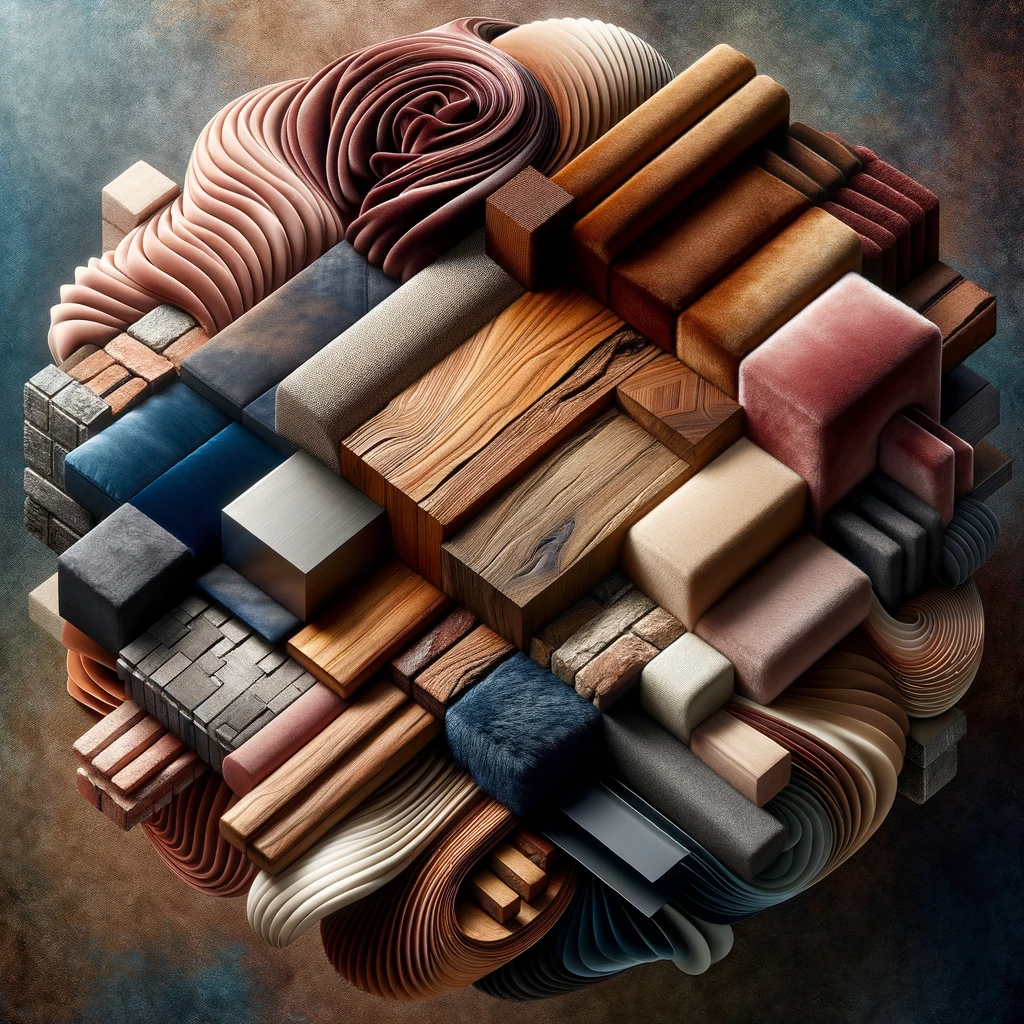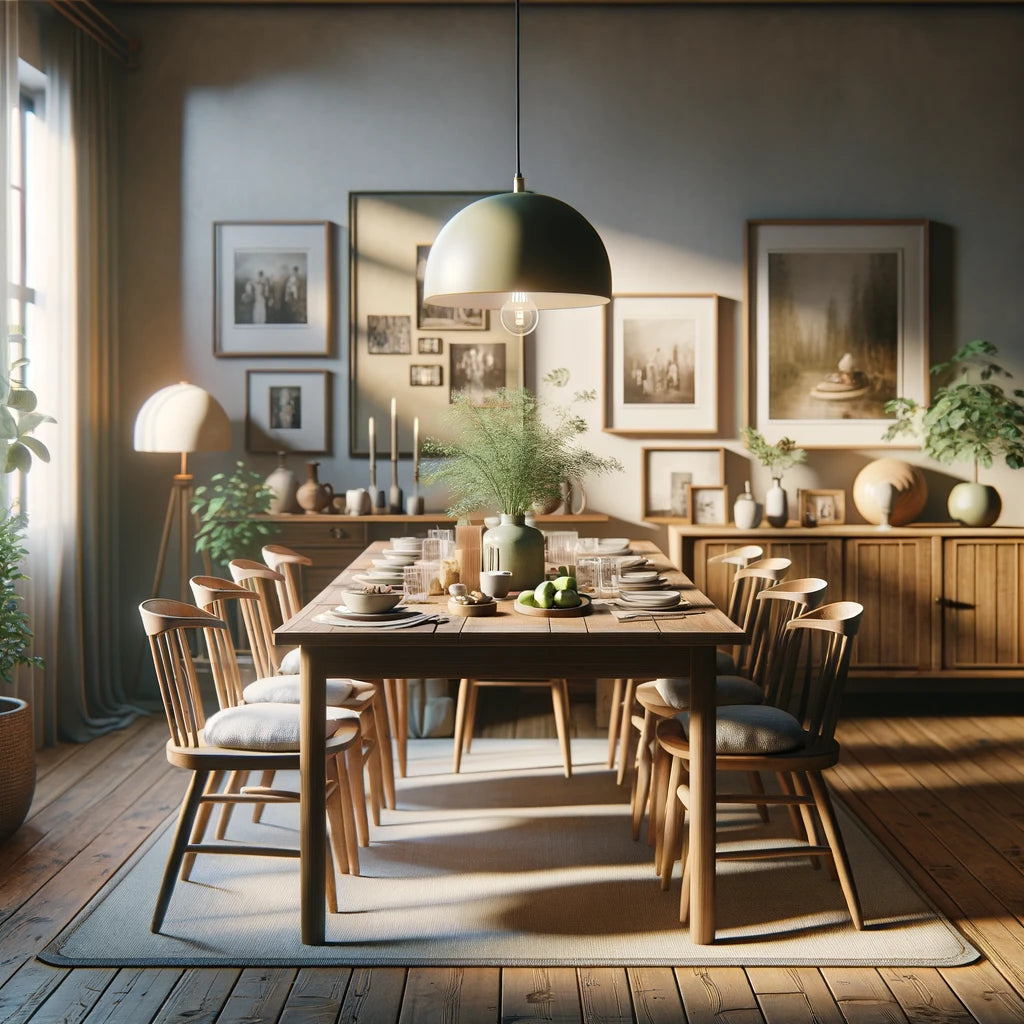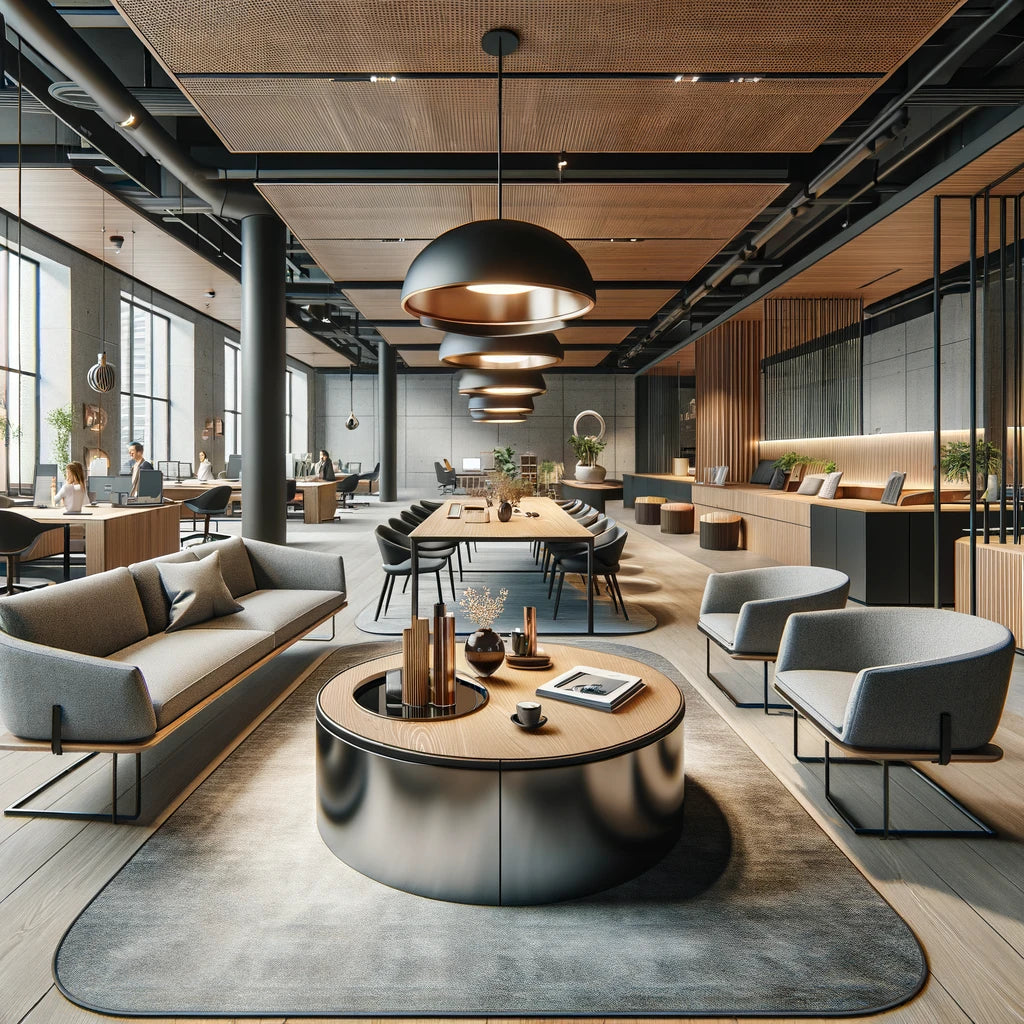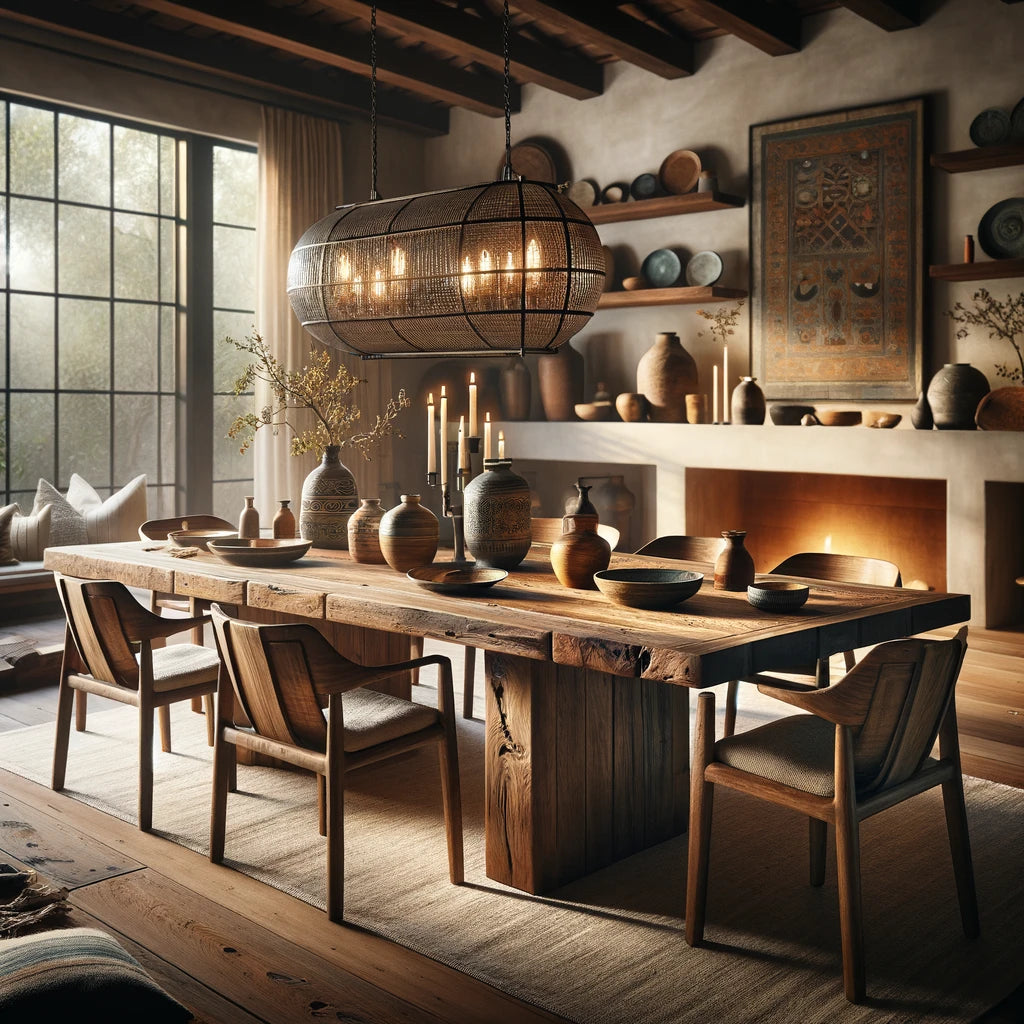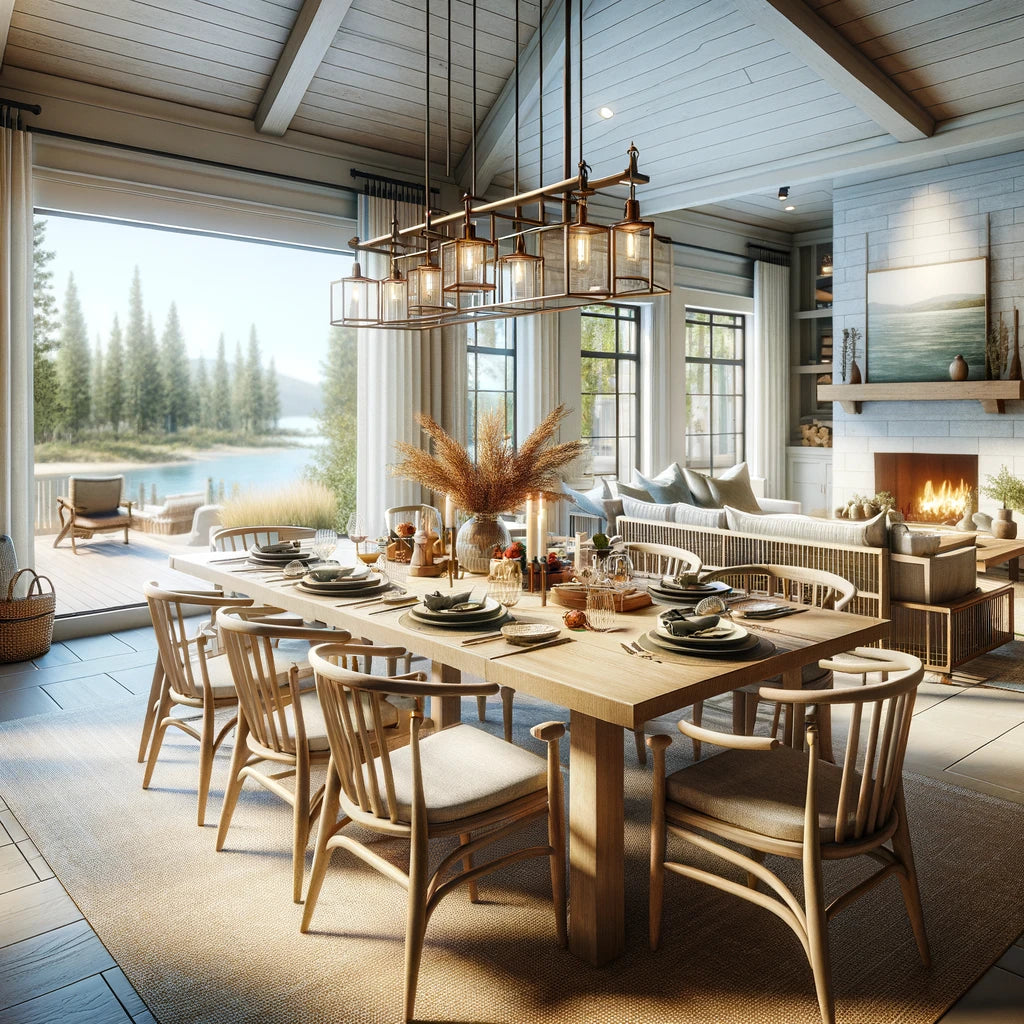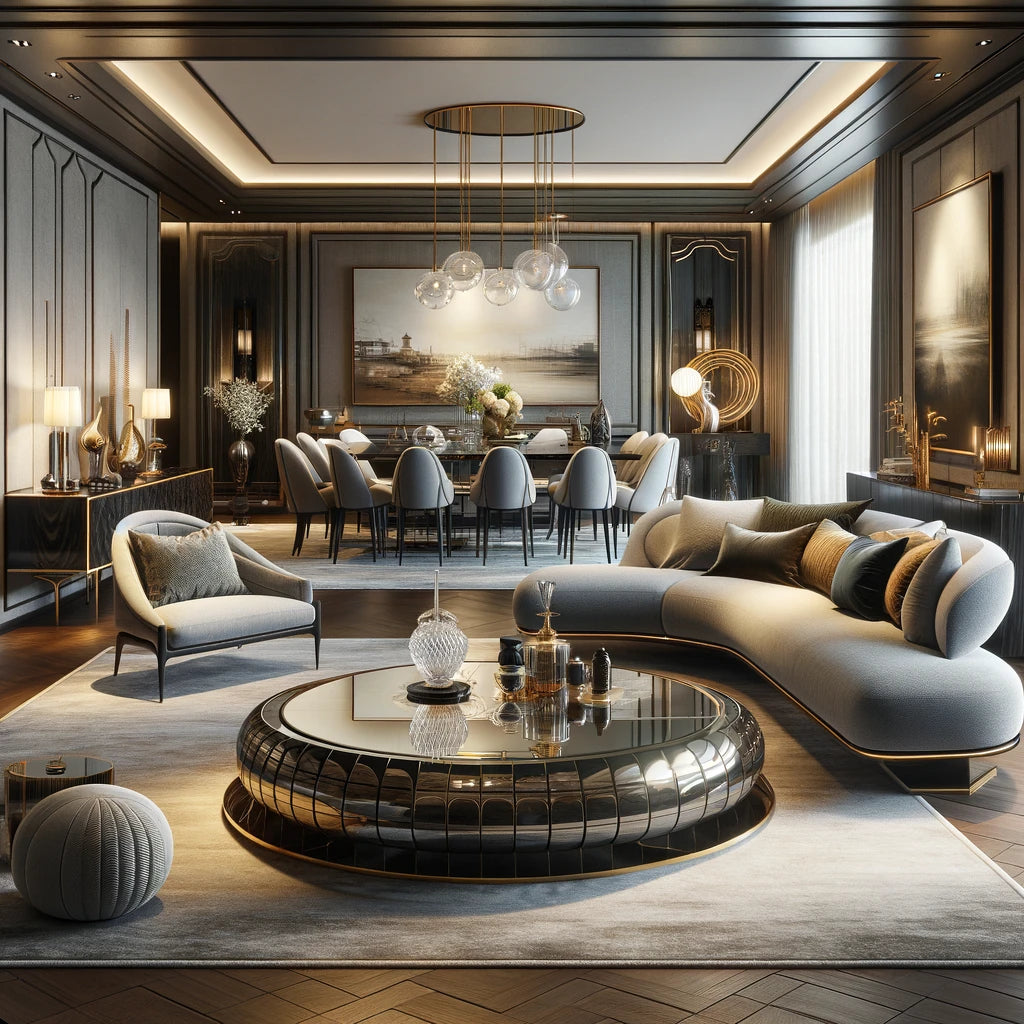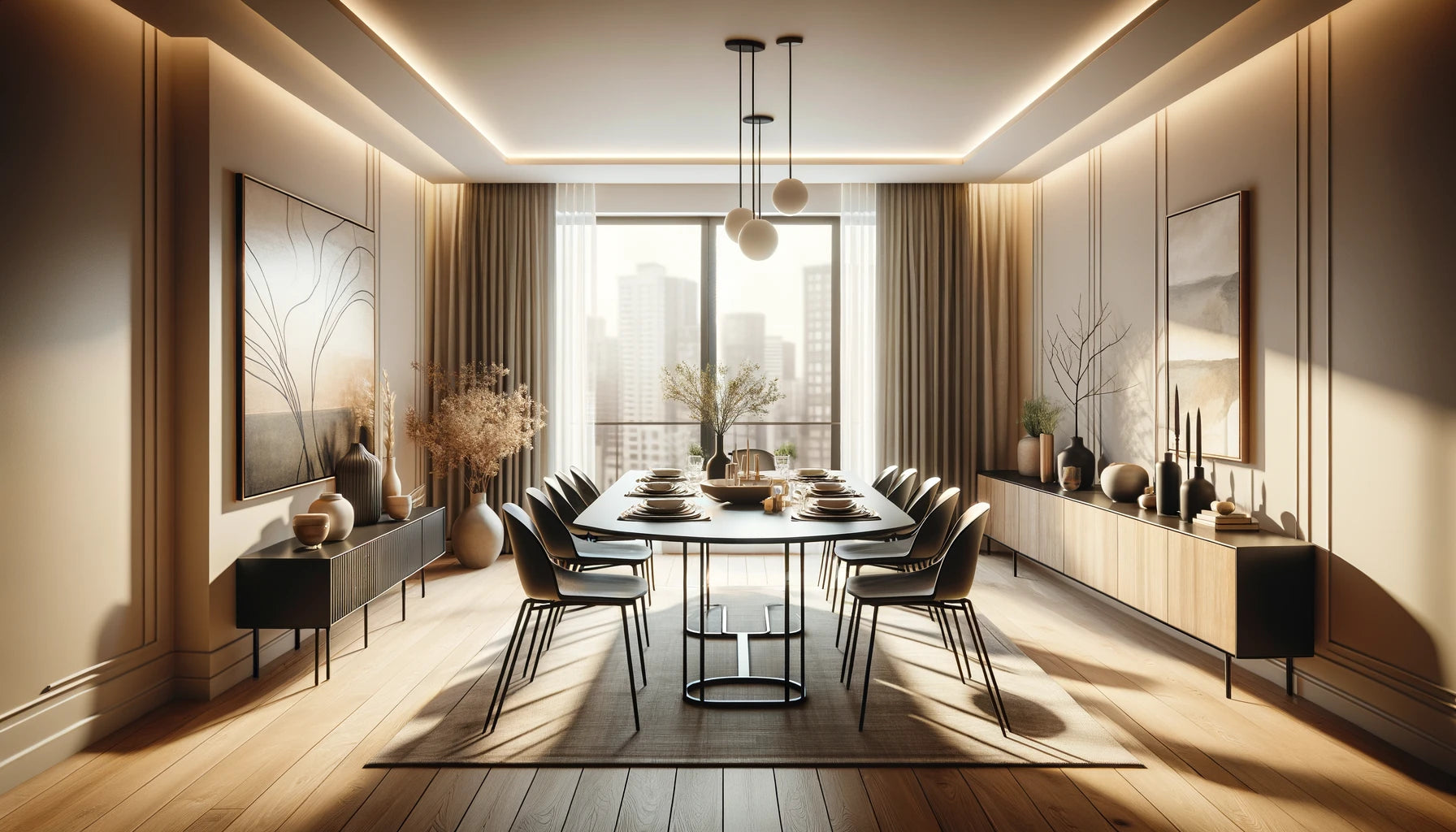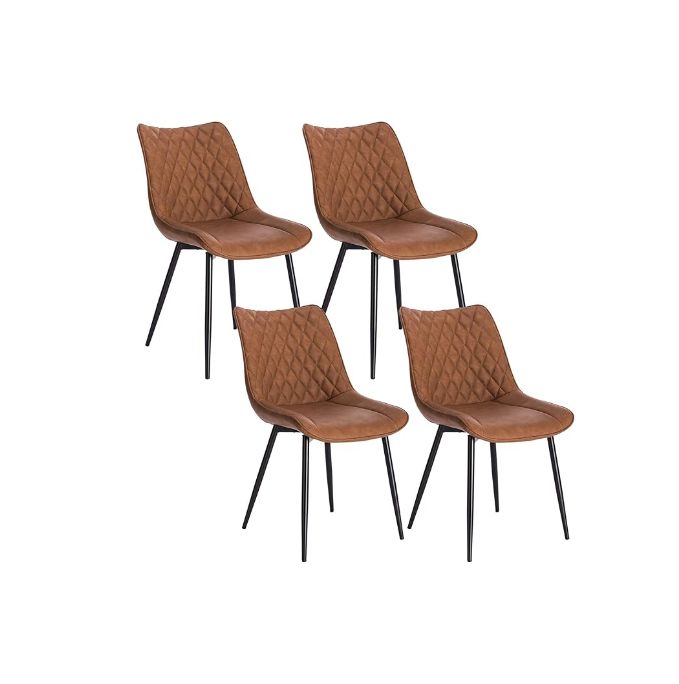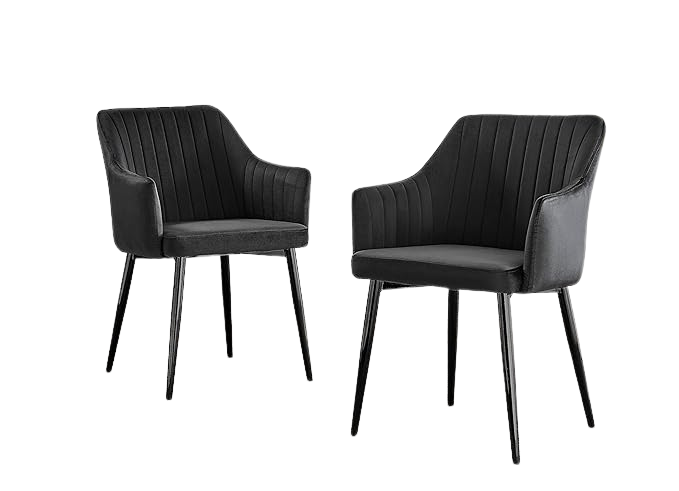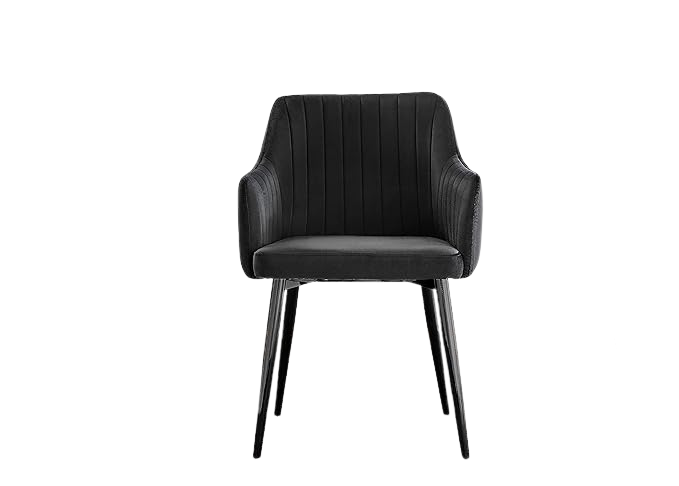In the world of interior design, texture is an unsung hero that quietly elevates the aesthetic of a space. It's the tactile character of surfaces, ranging from the plush feel of a velvet cushion to the rustic charm of a wooden tabletop. When different textures are thoughtfully combined, they create a rich, inviting atmosphere that transcends mere aesthetics.
In this exploration of texture, we will delve into four distinct facets that contribute to the artistry of interior design: Layering for Luxurious Depth, Contrast and Balance, Texture Beyond Fabrics, and The Art of Textural Moderation. Each of these facets offers a unique perspective on how textures can transform a space, making it visually captivating and emotionally resonant.
Layering for Luxurious Depth
Layering is a design technique that plays a pivotal role in achieving a sense of luxurious depth and texture integration in interior décor. This approach involves artfully combining various textured elements within a space to create an atmosphere of richness and visual intrigue. It's a technique that can transform a room from ordinary to extraordinary.
The essence of layering lies in the careful selection and arrangement of contrasting textures that harmonise and enhance one another. Consider, for instance, the pairing of a sleek, modern sofa with a soft, shaggy rug. The juxtaposition of these differing textures not only adds a visual dimension but also invites tactile exploration, encouraging people to reach out and touch the various surfaces. This tactile engagement can elevate the sensory experience within a room, making it more inviting and comfortable.

Furthermore, layering can extend to various elements within a space. For example, draping a knitted throw over a leather armchair or placing a silky scarf over a rustic, wooden ladder can introduce layers of texture and warmth into the room. These thoughtful additions don't just serve a functional purpose but also contribute to the overall aesthetics and cosiness of the space.
One of the remarkable aspects of layering is its adaptability to the changing seasons. You can switch out lighter, breezier textures for the warmer months, creating a refreshing and airy ambiance. Conversely, during colder seasons, you can introduce cosier, denser fabrics that exude warmth and comfort. This seasonal variation ensures that your space remains both stylish and adaptable throughout the year, reflecting the changing moods and needs of the seasons.
Contrast and Balance: The Yin and Yang of Textures
In the world of interior design, the art of achieving a harmonious balance of contrasting elements is akin to finding the perfect equilibrium between Yin and Yang. This delicate balance is especially evident in the realm of textures, where the juxtaposition of different tactile sensations can elevate a space to new heights of visual and sensory delight.
Balancing textures is not just about aesthetics; it's about creating a profound sensory experience within a room. It's about marrying disparate textures, such as the softness of fabrics and the hardness of metals, to produce a captivating symphony of design. When these contrasting elements coexist harmoniously, each contributes its own unique flavour to the overall design palette, resulting in a dynamic and visually engaging environment.
Consider, for instance, the interplay between a plush cushion and a sleek metal coffee table. The soft, inviting texture of the cushion is accentuated by the cool, smooth surface of the table. This juxtaposition creates a balanced visual contrast that not only captures the eye but also piques the senses. It's a tactile dialogue that encourages people to touch and feel, fostering a deeper connection with the space.

This artful interplay of opposites enriches the ambiance of the room, making it visually stimulating and emotionally resonant. It's a testament to the intricate dance of texture in design, where the marriage of disparate elements creates a tapestry of sensations that invite exploration and engagement.
Texture Beyond Fabrics: A Structural Approach
When we think of textures in interior design, our minds often gravitate towards soft furnishings like cushions, rugs, and curtains. However, the world of texture extends far beyond the realm of fabrics. An often-overlooked but immensely powerful aspect of texture in design is found in architectural elements within a space. Elements such as exposed brick walls, wooden ceiling beams, and other structural components play a pivotal role in shaping a room's texture narrative, creating a rich and layered environment.
Architectural textures are like the canvas upon which the entire design story unfolds. They provide a backdrop that enriches the overall feel of the space, infusing it with character and depth that goes beyond mere aesthetics. Take, for example, the timeless allure of an exposed brick wall. This rugged surface exudes rustic charm and tactile depth. It tells a story of the building's history, offering a connection to the past that adds authenticity and a sense of timelessness to the space.

Similarly, wooden ceiling beams bring warmth and character to a room. Their natural grain and imperfections tell a tale of craftsmanship and age, creating a sense of cosiness and nostalgia. Incorporating these architectural textures into your interior design is like adding chapters to a story. Each exposed brick or wooden beam contributes to the narrative, enriching the environment and allowing it to resonate with a sense of history and authenticity.
The Art of Textural Moderation
In the world of interior design, the art of textural moderation is akin to conducting a symphony, where the careful orchestration of various instruments results in a harmonious and captivating composition. It's a principle that emphasises the importance of balance and restraint in the use of textures within a space.
The primary objective of textural moderation is to strike a delicate balance between the diverse textures present. The ultimate goal is to create an environment where no single texture overwhelms or underwhelms the sensory experience. It's about achieving a harmonious interplay among textures, much like the seamless cooperation of musicians in an orchestra, where each instrument contributes its unique voice to the collective melody.

When executed with precision, this approach ensures that the space remains not only aesthetically pleasing but also comfortable and inviting. It's about curating a tactile environment that welcomes you with a gentle embrace. In such a space, textures coexist in perfect equilibrium, allowing you to fully appreciate the depth and richness they bring to your home.
Textural moderation doesn't mean avoiding bold or contrasting textures altogether; rather, it's about using them purposefully and thoughtfully. For example, a room can feature a variety of textures, including the plushness of a velvet sofa, the smoothness of glass surfaces, and the warmth of wooden accents. These textures can coexist harmoniously when their placement and proportion are carefully considered.
Conclusion
In conclusion, textures are the subtle yet powerful elements that bring life and personality to a space. They invite us to engage not just visually but also through touch, adding depth and warmth to our homes. The artful mix of textures can transform any room into a harmonious symphony of design, where every element plays its part in creating a captivating environment.
Whether it's through layering to achieve luxurious depth, finding balance in the yin and yang of textures, exploring architectural elements that go beyond fabrics, or practising textural moderation with precision, textures have the power to elevate interior design to new heights. They invite us to embrace the sensory experience of our surroundings, fostering a deeper connection with the spaces we inhabit. So, let us continue to celebrate and explore the world of texture, for it is the key to unlocking the full potential of interior design.


